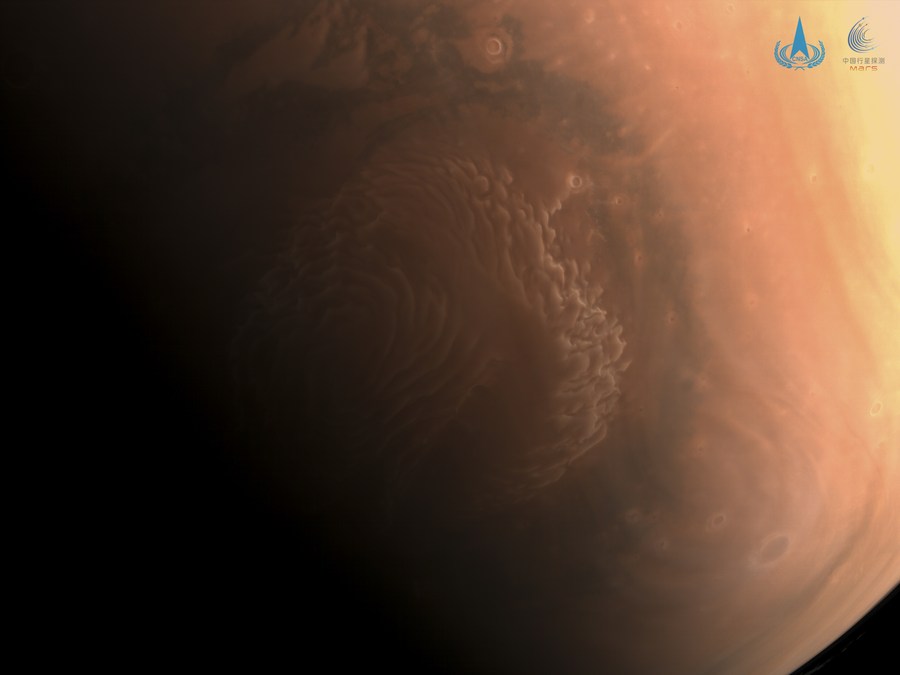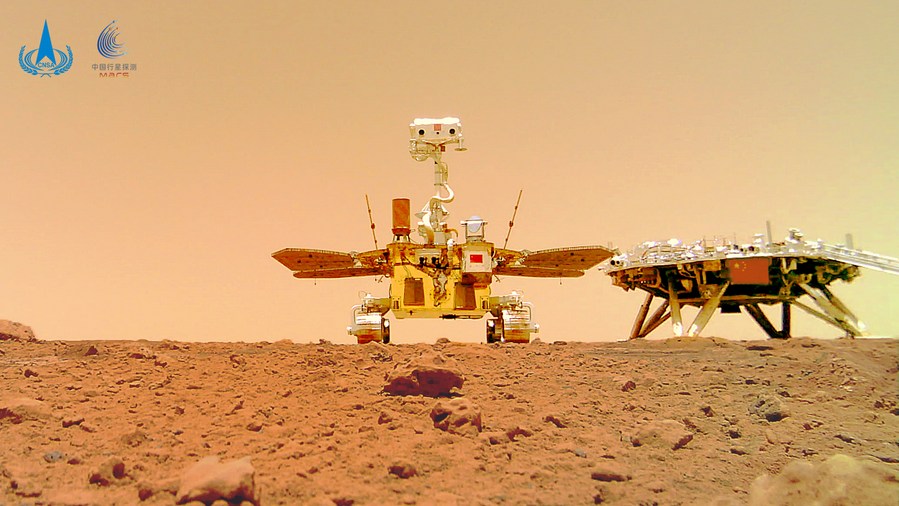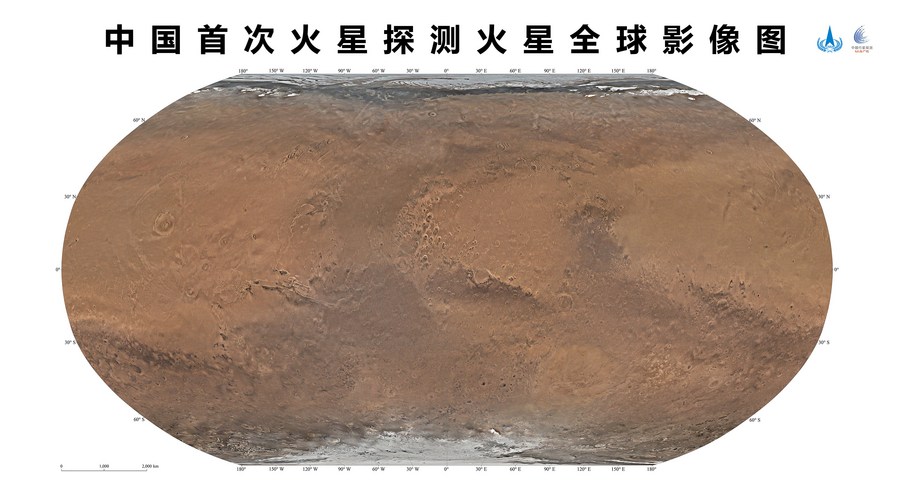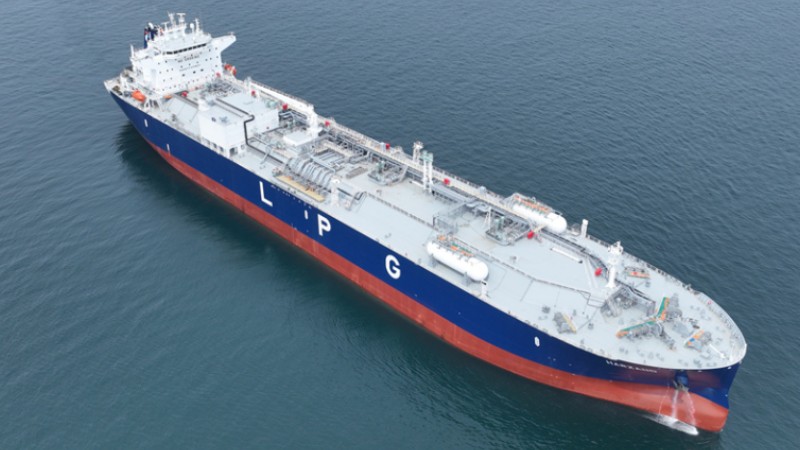Mars rover Zhurong finds evidence of water at red planet's low latitudes

File photo released on March 4, 2021 by the China National Space Administration (CNSA) shows a high-resolution image of Mars captured by the country's Tianwen-1 probe.(CNSA/Handout via Xinhua)
BEIJING, April 30 (Xinhua) -- China's Mars rover Zhurong has provided key observational evidence of liquid water at low Martian latitudes, the warmest regions on the red planet, according to a new study published in the journal Science Advances this week.
Previous studies found evidence of a large amount of liquid water on early Mars, but dramatic climate changes led to very low pressure and water vapor content, making it difficult for liquid water to exist sustainably on the present-day planet. Scientists believe that water can now only exist there in solid or gaseous forms.
However, droplets observed on the robotic arm of NASA's Phoenix Mars lander prove that salty liquid water can appear in the summer at high latitudes on Mars. Numerical simulations also suggest that climatic conditions suitable for liquid water can briefly occur in certain areas of Mars. But evidence of liquid water at the planet's low latitudes, where surface temperatures are highest, is still lacking.
Findings from the Zhurong rover now fill that gap.
Zhurong is part of China's Tianwen-1 Mars exploration mission. It landed on the Utopia Planitia, a vast plain in the northern hemisphere of Mars, on May 15, 2021. It has traveled approximately 2 kilometers and relayed a torrent of data to Earth before switching to dormant mode. It's landing site was in a low-latitude region of Mars.

Photo released on June 11, 2021 by the China National Space Administration shows a selfie of China's first Mars rover Zhurong with the landing platform.(CNSA/Handout via Xinhua)
A group of more than 20 researchers at the Chinese Academy of Sciences has since used data obtained by cameras and detectors aboard the rover to study the different-scale surface features and material compositions of dunes in the landing area.
They found some important morphological features on the dune surfaces, such as crusts, cracks, granulation, polygonal ridges and a strip-like trace. Data analysis revealed that the dune surficial layer is rich in minerals including hydrated sulfates, hydrated silica and ferrihydrite.
"According to the measured meteorological data from Zhurong and other Mars rovers, we inferred that these dune surface characteristics are related to the involvement of liquid saline water formed by the subsequent melting of frost and snow falling on the salt-containing dune surfaces when cooling occurs," said lead researcher Qin Xiaoguang, who works in the academy's Institute of Geology and Geophysics.
Qin explained that salts in dunes cause frost and snow to melt at low temperatures to form salty liquid water. When the saline water dries, the precipitated hydrated minerals bind sand particles to form sand aggregates and crust. The crust is then cracked further by shrinkage. The process later repeats, resulting in the ridges and strip-like trace on the crust surface.

This photo released on April 24, 2023 shows the Robinson projection of Mars. (CNSA/Handout via Xinhua)
In the study, researchers estimated the dunes Zhurong found were formed about 400,000 to 1.4 million years ago. The exchange of water vapor between the higher and lower latitudes during this period led to repeated humid environments at low Martian latitudes, followed by the frequent occurrence of salty water when temperatures dropped in the region.
Qin said the discovery provides key proof of liquid water at Martian low latitudes, where surface temperatures are relatively warm and more suitable for life than high latitudes.
It also provides information for the design of future exploration strategies for Mars rovers. As saline water once existed at various latitudes on the surface of Mars, priority should be given to salt-tolerant microbes in future missions searching for extant life on Mars, researchers said in the study.
Photos
Related Stories
Copyright © 2023 People's Daily Online. All Rights Reserved.









